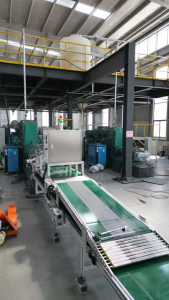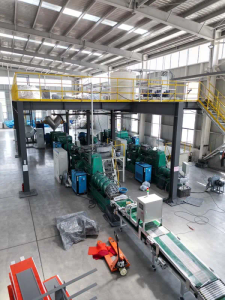Applications and Advantages of Silicon Carbide in LED Lighting
Silicon Carbide (SiC) has emerged as a crucial material in the realm of LED lighting, revolutionizing the industry with its unique properties and diverse applications. This article explores the profound impact of SiC on LED technology, delving into its applications across various sectors and highlighting the advantages that make it a preferred choice among engineers and manufacturers.
Understanding Silicon Carbide (SiC)
Silicon Carbide, a compound of silicon and carbon, exhibits exceptional semiconductor properties that set it apart from traditional materials like silicon. Its wide bandgap and superior thermal conductivity make it highly suitable for high-power and high-frequency applications. In the realm of LED lighting, SiC plays a pivotal role in enhancing efficiency, reliability, and longevity.
Properties of Silicon Carbide Relevant to LED Lighting
1. Wide Bandgap: SiC possesses a wide bandgap (2.2 eV for 6H-SiC and 3.2 eV for 3C-SiC), which allows for operation at higher temperatures and frequencies compared to silicon. This property reduces energy losses and enhances overall efficiency in LED applications.
2. Thermal Conductivity: With a thermal conductivity significantly higher than silicon (4.9 W/cm·K for SiC versus 1.5 W/cm·K for silicon), SiC enables better heat dissipation, crucial for maintaining LED performance and reliability over extended periods.
![]()
3. Chemical Stability: SiC’s robust chemical properties ensure resistance to corrosion and degradation, making it ideal for harsh environmental conditions often encountered in outdoor LED lighting.
Applications of Silicon Carbide in LED Lighting
SiC’s unique properties enable its application across various facets of LED lighting, spanning from residential and commercial installations to specialized industrial uses.
Residential and Commercial Lighting
In residential and commercial settings, LED lights utilizing SiC technology offer:
– Energy Efficiency: SiC-based LEDs consume less power while delivering superior brightness, resulting in reduced energy costs for homeowners and businesses alike.
– Longevity: The durability of SiC enables LED bulbs to have a longer operational lifespan, reducing maintenance requirements and enhancing reliability.
Automotive Lighting
In automotive applications, where reliability and performance are critical, SiC-based LEDs provide:
– High Temperature Tolerance: SiC’s ability to withstand higher temperatures ensures consistent performance in automotive environments prone to heat fluctuations.
– Compact Design: The compact nature of SiC-based LEDs allows for sleeker designs and integration into modern automotive lighting systems.
Industrial and Specialty Lighting
For industrial and specialty lighting applications, SiC offers:
– High Power Capability: SiC LEDs can handle higher currents and voltages, making them suitable for industrial lighting solutions that Crucible Sagger require intense illumination over large areas.
– Environmental Resilience: The chemical and thermal stability of SiC ensure reliable operation in challenging industrial settings, including manufacturing facilities and hazardous environments.
Advantages of Silicon Carbide in LED Lighting
The adoption of SiC in LED lighting brings forth several distinct advantages that contribute to its growing popularity among designers and manufacturers:
– Enhanced Efficiency: SiC’s superior electrical and thermal properties minimize energy losses and maximize light output efficiency, leading to significant energy savings and reduced carbon footprint.
– Improved Reliability: The robust nature of SiC ensures prolonged operational life and minimal degradation over time, reducing replacement and maintenance costs for LED lighting systems.
– Environmental Benefits: Lower energy consumption and extended lifespan contribute to environmental sustainability, aligning with global efforts towards energy efficiency and reduced greenhouse gas emissions.
– Design Flexibility: SiC’s unique properties allow for the design of compact and versatile LED lighting solutions that cater to diverse applications, from residential to industrial uses.
![]()
Future Trends and Innovations
Looking ahead, continuous advancements in SiC technology promise even greater innovations in LED lighting. Future developments may focus on:
– Integration with IoT: SiC-enabled smart lighting systems that offer enhanced control and connectivity, catering to the growing demand for IoT-enabled smart homes and cities.
– Efficiency Improvements: Ongoing research aims to further enhance the efficiency and performance of SiC-based LEDs, pushing the boundaries Silicon Carbide Desulfurizing Nozzle of what is achievable in lighting technology.
Conclusion
![]()
In conclusion, Silicon Carbide stands at the forefront of LED lighting innovation, revolutionizing the industry with its exceptional properties and diverse applications. From residential to industrial settings, SiC-based LEDs offer unparalleled efficiency, reliability, and environmental sustainability. As technology continues to evolve, SiC remains poised to shape the future of lighting, providing brighter, more energy-efficient solutions for a connected world.
https://oaicon.com/




